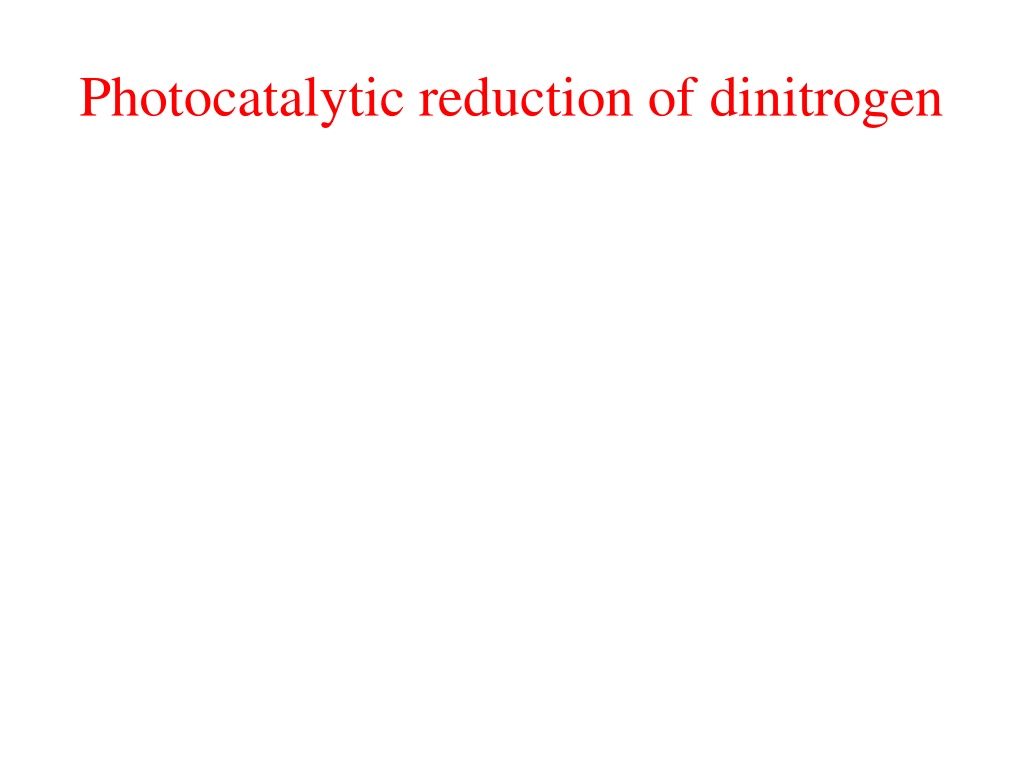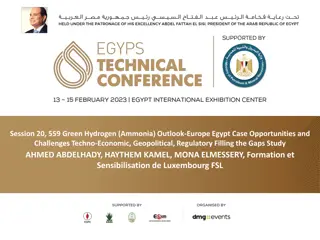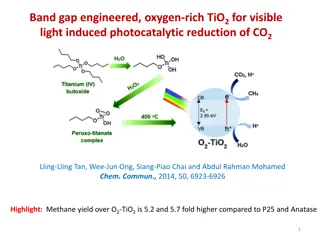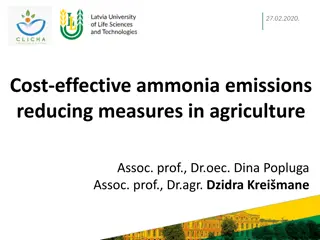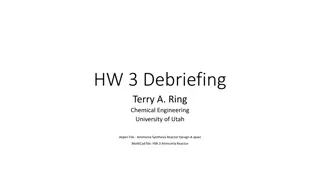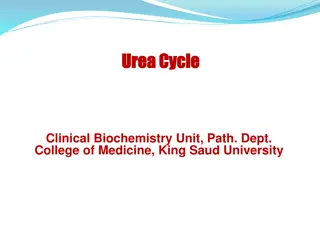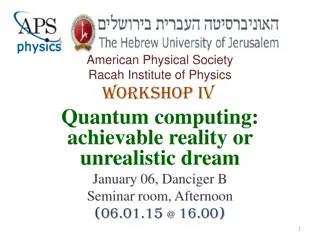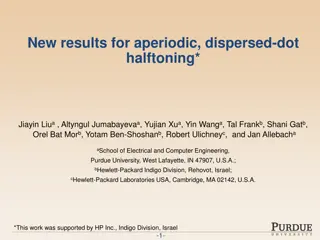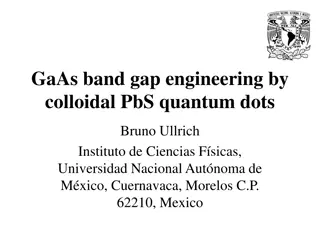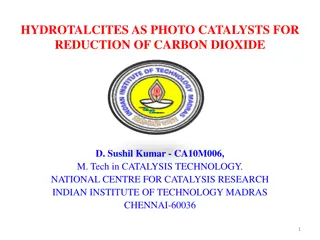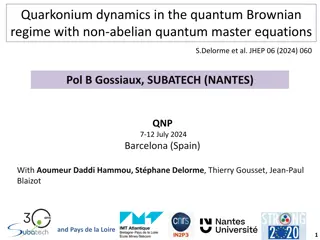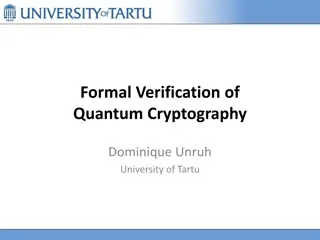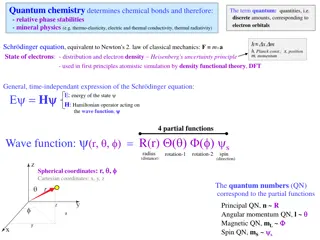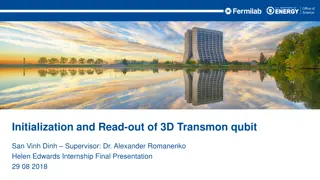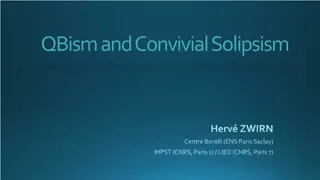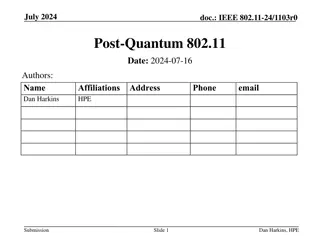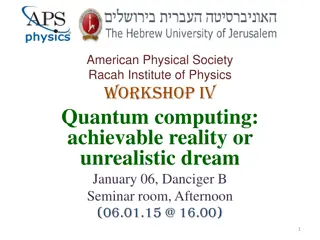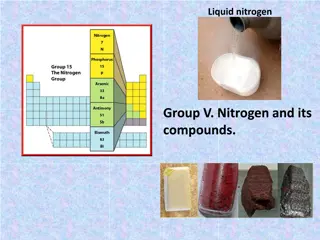Efficient Photocatalytic Reduction of Dinitrogen to Ammonia Using Bismuth Monoxide Quantum Dots
N2 reduction to ammonia by solar light offers a sustainable approach to combating global warming and energy crises. Bismuth monoxide quantum dots demonstrate high efficiency in catalyzing this process without the need for sacrificial agents or co-catalysts, achieving a significant increase in ammonia synthesis rate compared to traditional photocatalysts. The synergy of low valence Bi(ii) species enhances N2 activation, leading to exceptional N2 photoreduction performance. This research provides insights into designing efficient and robust N2 reduction photocatalysts.
Download Presentation

Please find below an Image/Link to download the presentation.
The content on the website is provided AS IS for your information and personal use only. It may not be sold, licensed, or shared on other websites without obtaining consent from the author. Download presentation by click this link. If you encounter any issues during the download, it is possible that the publisher has removed the file from their server.
E N D
Presentation Transcript
N2 reduction to ammonia by solar light represents a green and sustainable ammonia synthesis approach which helps to suppress the global warming and energy crisis. However, conventional semiconductors usually suffer from low activity or poor stability, largely suppressing the application of this technology. Here, we report that bismuth monoxide (BiO) quantum dots with an average size of 2-5 nm exhibited efficient photocatalytic activity for ammonia synthesis under simulated solar light. A highly efficient ammonia synthesis rate of 1226 molg 1 h 1 is achieved without the assistance of any sacrificial agent or co-catalyst, which is about 1000 times higher than that using the traditional Fe-TiO2 photocatalyst. Kinetic analysis reveals that the synergy of three low valence surface Bi(ii) species markedly enhances N2 activation by electron donation, which finally resulted in the highly efficient N2 photoreduction performance. This work will shed light on designing efficient and robust N2 reduction photocatalysts.
The reduction of dinitrogen (N2) to ammonia is a requisite transformation for the life growth and survival. Although over 78% of the atmosphere is composed of dinitrogen molecules, they are not used by most of organisms due to strong N N bond, non polarity and high ionization potential. At present, most of the required nitrogen for human beings is still originated from the energy- intensive Haber Bosch ammonia synthesis process, which consumes 1-2% of the world s energy supply and generating more than 300 million tons of carbon dioxide annually. In contrast, dinitrogen photo- reduction to ammonia by solar light represents a green and sustainable ammonia synthesis route without fossil fuel consumption and CO2 emissions. However, the state-of- Emissions. the-art efficiencies for ammonia synthesis by this approach are still far away from the industry demand.
Generally, the rate-determining step for N2 reduction is cleavage of the N N bond. N2 activation by electron donation from some some reducing active sites are indispensable for the promotion of N N bond cleavage, but such reducing active sites are rarely existed on most of the semiconductor photo-catalysts. Up to the present, the majority of the reported N2 photoreduction catalysts are only have defect type activation centers,which resulted in the unsatisfied photocatalytic performance because of their limited defect concentrations. Besides, defect states often suffer from thermal instability and increased charge carrier recombination, further prevents their practical application for artificial ammonia synthesis. Consequently, developing an ideal photocatalytic material which has high concentration of non-defect type activation centers with robust stability holds the key to achieving a breakthrough in N2 photoreduction technology.
Using low valence metal species in low-valent metal oxide semiconductors for N2 activation may be a viable strategy to achieve this important goal. Low-valent metals in semiconductor solids have fewer coordination atoms than those in their high-valent state and are hence chemically unsaturated to facilitate chemisorption of molecules. Owing to the strong electron donating power, low- valent metal species such as Fe, Mo, Zr, and Ti have been widely studied for N2 activation in organometallic complexes, although a stoichiometric excess of strong reducing agents (such as Na, K) and extra proton sources are generally required to further generate NH3 in these reaction systems. Different from organometallic complexes, low-valent metal species in semiconductor materials may act as both N2 activation and hydrogenation centers without extra reducing agents, which allows quick reaction kinetics for N2 reduction, because the conduction band of a metal oxide semiconductor is usually hybridized by the metal p, d orbitals, and photogenerated electrons are mainly located on the metal sites. Moreover, different from defect-type active sites, lattice low-valent metal species can refrain from becoming an electron hole recombination center and all of the surface low-valent metal sites could contribute to the catalysis reaction
In this regard, low-valent metal oxide semiconductors are expected to exhibit high photocatalytic activity for N2 photoreduction. To con rm this opinion, herein low valent bismuth monoxide (BiO) was selected as an ideal model material to study the N2 photoreduction performance. We focus on low valent bismuth(II) because it has high electron donating power and empty 6d orbitals for N2 adsorption and activation. More importantly, bismuth based materials have been widely studied with various catalytic application
Electrochemical measurements Electrochemical measurements were performed on a CHI 660D electrochemical workstation (Shanghai Chenhua, China) using a standard three-electrode cell with a working electrode, a platinum wire as the counter electrode, and a standard saturated calomel electrode (SCE) in saturated KCl as the reference electrode. The working electrodes were prepared by dip- coating: brie y, 5 mg of the photocatalyst was suspended in 0.1 mL of ethanol in the presence of 1% Na on to produce a slurry, which was then dipcoated onto a 2 cm 1.5 cm FTO glass electrode
Calculation of electron transfer number For an adsorption-controlled and irreversible electrode process, according to Laviron,35 Ep is de ned by the following equation: Ep = E0 + (RT/anF)ln(RTk0 /anF)+(RT/anF)ln v where R is the molar gas constant, T is the thermodynamic temperature, F is the Faraday constant, a is the transfer coefficient, k0 is the standard rate constant of the reaction, n is the electron transfer number involved in the rate-determining step, n is the scan rate (mV s1 ), and E0 is the formal potential.
